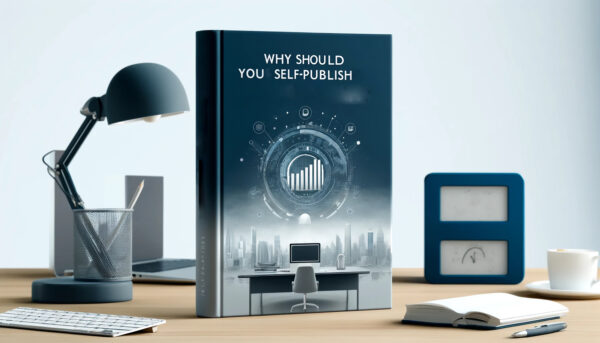Sustainability isn’t just a buzzword anymore—it’s become a global necessity. The publishing industry, which produces around 300,000 metric tons of greenhouse gases annually, is no exception. With more readers swapping paperbacks for e-books and authors opting for recycled paper, it’s clear that the eco-friendly wave has hit publishing. In fact, a recent study found that 70% of readers now consider a publisher’s environmental practices before making a purchase. If books could talk, they’d probably say, “Can we print without killing the planet, please?”
But fear not—this guide is here to help! We’ll dive into the world of sustainable printing options, exploring everything from recycled paper to soy-based inks, and show you how the publishing world is taking steps toward a greener future. Because, let’s be honest, saving the planet while still getting to read your favorite novels sounds like a win-win, doesn’t it?
The Environmental Impact of the Publishing Industry
Let’s face it—publishing a book leaves a bigger environmental footprint than you might think. Every printed book involves cutting down trees, consuming energy, and producing waste. In fact, the traditional publishing process contributes significantly to deforestation and carbon emissions. On average, producing a single book can generate up to 7.5 kilograms of CO2, which adds up fast when you consider that millions of books are printed each year.
Now, I know what you’re thinking: “Wait, my favorite book is a carbon culprit?” Unfortunately, yes. Between paper production, printing, and transportation, the publishing industry has a sizable impact on our planet. Not to mention, many of those unsold books end up as landfill waste. According to research, approximately 40% of books published each year are never sold and ultimately discarded. That’s a lot of trees, ink, and energy going to waste.
But don’t despair—there’s good news on the horizon. The shift in the publishing industry toward more sustainable practices is gaining momentum, with publishers and authors alike looking for ways to reduce this environmental burden. From using recycled paper to digital distribution, the industry is slowly but surely turning a page toward a more eco-friendly future. And the best part? You, as an author or reader, can be part of the solution.
Start Your Publishing Journey FOR FREERecycled Paper: A Game Changer in Eco-Friendly Publishing
You’ve probably heard about recycled paper as the go-to eco-friendly option, but how much of a difference does it really make? A huge one, actually! Switching to recycled paper can reduce energy consumption by 40%, water usage by 50%, and greenhouse gas emissions by a whopping 70% compared to producing virgin paper. It’s like giving the environment a high-five every time you print a page.
But let’s get specific. When book publishers do opt for recycled paper, they’re not just saving trees—they’re reducing the need for harmful chemicals and cutting down on the energy it takes to make fresh paper from raw materials. In fact, if just one million books were printed on 100% recycled paper, we’d save around 30,000 trees. That’s like preserving an entire forest for future generations of readers (and, you know, the planet).
And here’s where it gets even better. Recycled paper today is high-quality and durable—no more worrying about your book looking like it was printed on grocery bags. Certifications like those from the Forest Stewardship Council (FSC) ensure that recycled paper meets rigorous environmental standards, so you can be sure you’re making the right choice for both your book and the environment.
So, the next time you’re getting ready to publish, think about the paper you’re using. Not only will you be helping the planet, but you’ll also be sending a clear message to readers: “I’m eco-conscious, and so is my book.” Who wouldn’t want that kind of green cred?
Sustainable Printing Inks and Alternatives
Let’s talk ink. We might not think about it much, but traditional printing inks are loaded with petroleum-based chemicals that are about as eco-friendly as a gas-guzzling SUV. These inks release volatile organic compounds (VOCs) into the atmosphere, contributing to air pollution and making the entire printing process far less sustainable. So, what’s the greener alternative? Enter soy-based and vegetable-based inks—your book’s new best friend.
Soy-based inks, in particular, have become a favorite in eco-friendly publishing. Not only do they produce more vibrant colors (so your cover design pops), but they also release far fewer VOCs. Plus, they’re easier to recycle, which means the paper your book is printed on can have a second life without much hassle. In fact, soy-based inks are so good at what they do that they’ve been adopted by major newspapers like The New York Times—talk about sustainable street cred!
Another great option? Vegetable-based inks. These inks are derived from renewable resources like flax, safflower, and corn, making them a fantastic eco-friendly choice. While they might sound like something you’d find in a kitchen, vegetable inks are making waves in the printing world by reducing the environmental impact without sacrificing quality. They’re biodegradable, produce fewer toxins, and make the recycling process much easier.
E-Books and Digital Publishing: Are They Truly Greener?
Ah, the digital age—where everything from novels to textbooks can be downloaded with a single click. But does digital publishing and education really deliver on its promise of being a more eco-friendly alternative? The answer is yes… and no. Let’s break it down.
On the surface, e-books seem like the perfect green solution. No paper, no ink, no shipping. You might think, “Problem solved! E-books for everyone!” And it’s true that switching to digital formats drastically reduces the demand for paper and ink, cutting down deforestation and harmful chemical use. In fact, producing a single e-book generates only about 0.01 kg of CO2 emissions, compared to the 7.5 kg generated by a traditional printed book.
But (and there’s always a “but”), e-readers come with their own environmental baggage. The manufacturing process for e-readers consumes a surprising amount of resources, including rare metals and plastics. Not to mention the energy required to power these devices. Studies show that the environmental impact of producing one e-reader is equivalent to that of producing about 40-50 printed books. Yikes!
However, the story doesn’t end there. Over time, if you’re a voracious reader, your e-reader becomes a greener choice as it offsets its initial carbon footprint the more books you download. The break-even point is around 20-30 books. So, if you’re planning to read a whole library’s worth of material, e-books are definitely the more eco-friendly option. But if you’re an occasional reader, sticking to sustainably printed books might still be the greener path.
What Major Publishing Houses are Doing for Sustainability
Big names in the book publishing industry, like Penguin Random House, are embracing the green movement, and it’s about time! As industry leaders, they play a key role in driving sustainable practices. The good news? Many are making significant strides.
For example, Penguin Random House aims to be carbon neutral by 2030 and has already cut over 10,000 tons of emissions annually by using renewable energy and carbon offset programs. Other major publishers are also adopting eco-friendly practices, like using Forest Stewardship Council (FSC) certified paper, ensuring responsibly managed forests and reduced deforestation.
Beyond paper, publishers are moving toward digital-first strategies and sustainable shipping methods to reduce overprinting and their carbon footprint. These efforts mean your favorite publishers are actively reducing their environmental impact, and as demand for greener business practices grows, so does the industry’s commitment to sustainability.
How Independent Publishers Can Contribute to a More Sustainable Industry
Independent publishers are uniquely positioned to adopt eco-friendly practices faster than larger companies. With smaller operations and more direct control, they can implement green initiatives and set new industry standards.
One key advantage is their ability to choose environmentally conscious printing methods, like print-on-demand (POD), which reduces waste by printing books only when ordered. This can cut overproduction by up to 50% and prevent unsold books from ending up in landfills. Many indie publishers also use FSC-certified or 100% recycled paper, lowering their carbon footprint and showing a strong commitment to environmental sustainability.
Indie publishers are also leveraging digital platforms to offer e-books and audiobooks, further reducing the need for physical materials and shipping. For them, going green isn’t just a trend—it’s about shaping an eco-friendly future for publishing.
So, if you’re an indie publisher, you’re in a prime position to lead the shift toward a more sustainable industry, proving that smaller players can make a big difference.
Sustainably Managed Forests: A Path to Responsible Paper Sourcing
When it comes to printing books, where your paper comes from makes a world of difference—literally. Sustainably managed forests are the gold standard for responsible paper sourcing, ensuring that every tree cut down for paper is part of a cycle of regrowth and environmental protection. It’s like taking from nature but with a promise to give back.
But what exactly are sustainably managed forests? These are forests where trees are harvested in a way that allows for regeneration, ensuring the forest remains healthy and thriving. The goal is to maintain biodiversity, protect wildlife habitats, and avoid deforestation. Organizations like the Forest Stewardship Council (FSC) play a crucial role in certifying that paper comes from these responsible sources. When you see the FSC label on your book, you can rest easy knowing that the paper inside came from a forest that’s being managed with the future in mind.
Using paper from sustainably managed forests not only helps combat deforestation but also reduces carbon emissions. Forests act as carbon sinks, absorbing CO2 from the atmosphere, and sustainably managed forests continue to perform this vital function even after trees are harvested. Plus, replanting trees keeps the cycle going, so the environmental impact of your book is significantly lower.
So, whether you’re a publisher, an author looking to publish a new title, or a reader buying your next novel, choosing books printed on FSC-certified paper is a small but impactful way to support sustainability. After all, forests are one of our best natural defenses against climate change—and we all have a role to play in keeping them standing.
Start Your Publishing Journey FOR FREEPractical Tips for Authors: How to Make Your Book More Eco-Friendly
As an author, you have more power than you think when it comes to making your book eco-friendly. From choosing sustainable printing options to promoting green practices in your marketing, there are several steps you can take to reduce the environmental impact of your work. The best part? Going green doesn’t have to mean compromising on quality or breaking the bank.
Here are the best tips:
- Opt for recycled or FSC-certified paper: Reduces deforestation and energy consumption, while still maintaining high-quality print for your book.
- Use print-on-demand (POD) services: Print books only when ordered, cutting down on waste and preventing unsold copies from ending up in landfills.
- Go digital with e-books or audiobooks: Eliminates the need for paper, ink, and shipping, making this the greenest publishing option available.
- Promote your eco-friendly choices: Incorporate your sustainability efforts into your marketing to attract environmentally conscious readers and build a loyal audience.
By taking these steps, you can create a great book while reducing your environmental impact and supporting a healthier planet.
Eco-Friendly Book Publishing: Taking the Right Steps Toward a Sustainable Future in Book Publishing
The world of book publishing is evolving, and the shift toward eco-friendly practices is a necessary part of that evolution. From choosing recycled paper to adopting soy-based inks and exploring the benefits of digital publishing, every step toward sustanability makes a difference. Whether you’re an author looking to reduce your book’s carbon footprint or a reader interested in supporting eco-conscious publishers, your choices contribute to a more sustainable future for the industry.
Major publishing houses and indie publishers alike are taking action, but there’s still plenty of work to be done. The future of writing and publishing depends on all of us—authors, publishers, and readers—making mindful decisions that prioritize the health of the planet without sacrificing the love of books.
In the end, the choice is simple: we can keep turning pages, but let’s make sure we’re doing it in a way that’s kind to the environment. Together, we can write the next chapter in the story of sustainable publishing, one book at a time.
Ready to Publish Sustainably? Join Spines Today! At Spines, we believe in creating a greener future for publishing—one book at a time. From print-on-demand services to digital solutions, we’re here to help you turn your passion for storytelling into a sustainable reality. Join the movement toward sustainable publishing. Let’s write a better future together—start with Spines!
Start Your Publishing Journey FOR FREE






